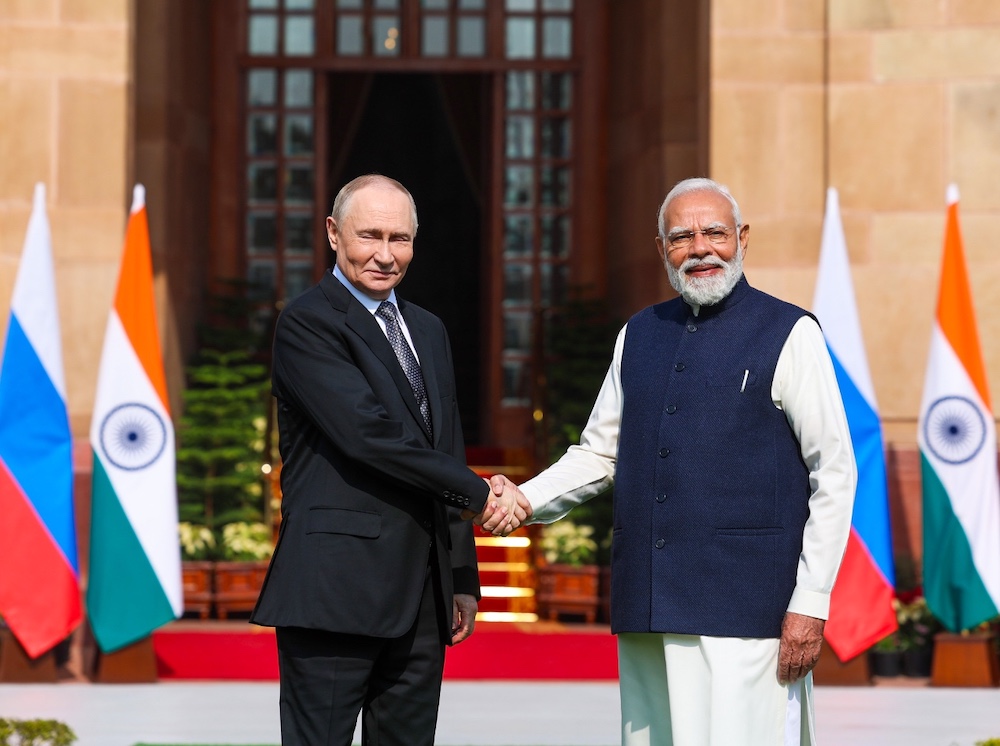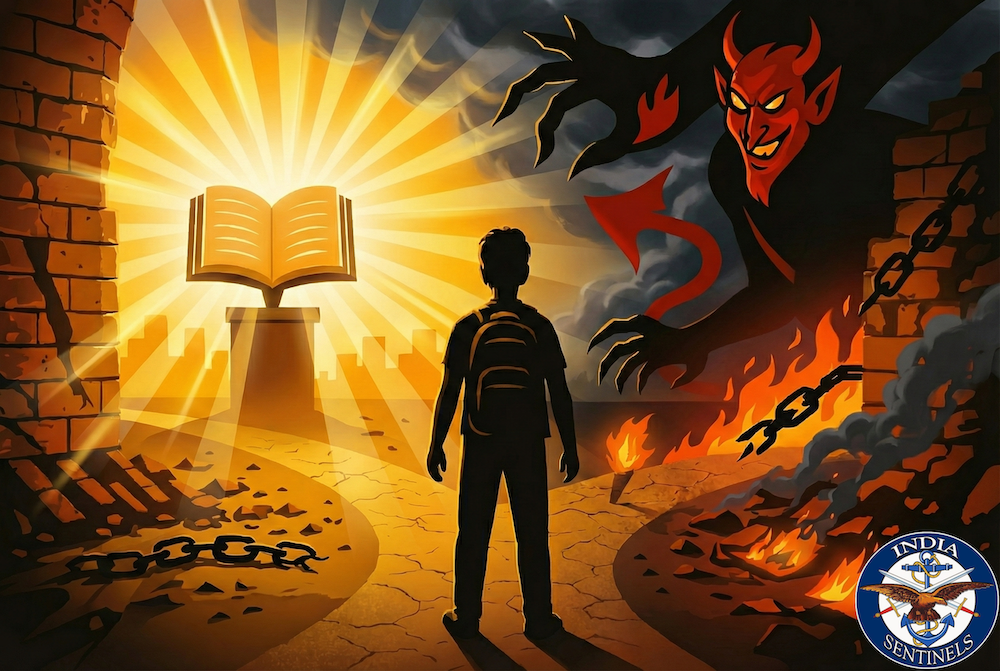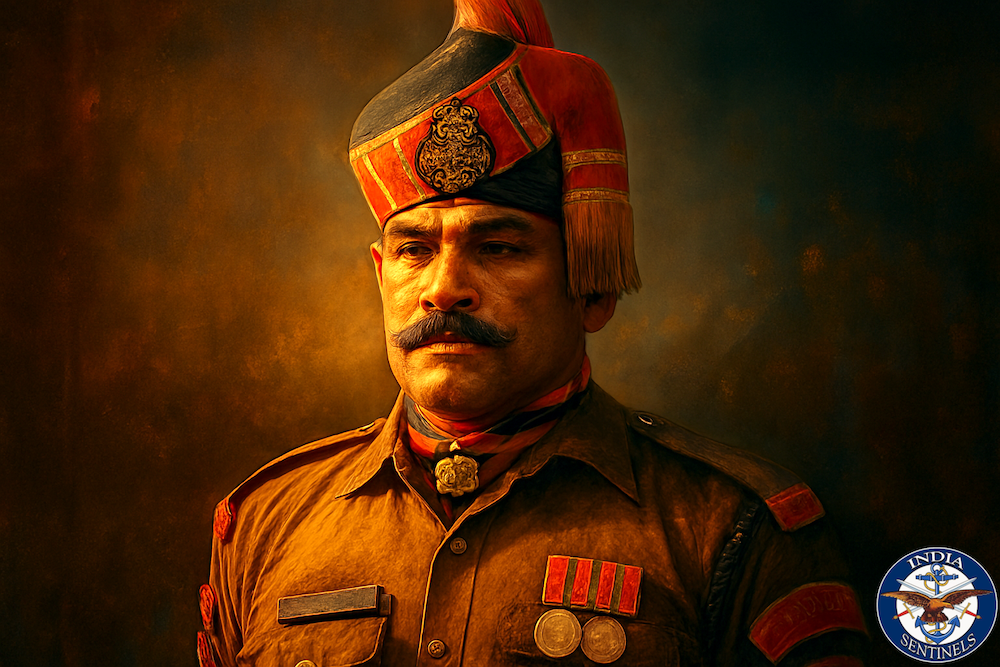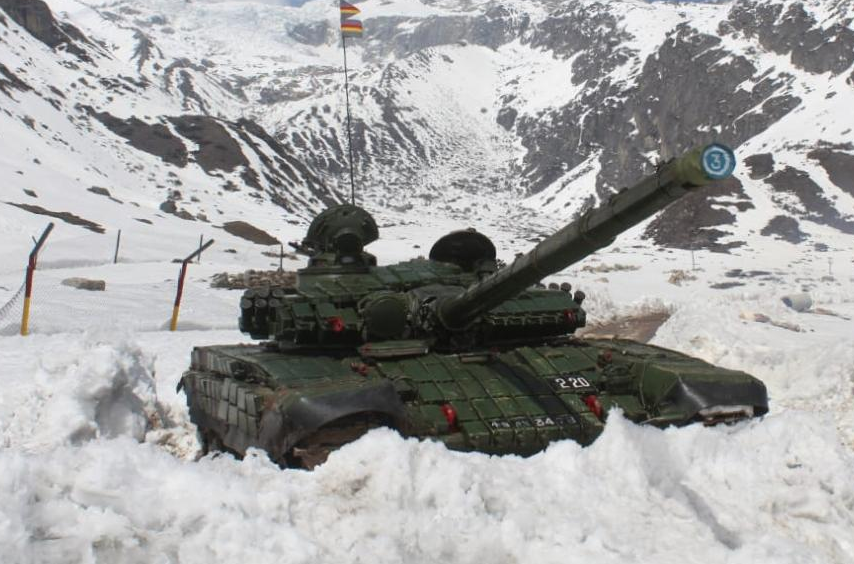 An Indian Army T-72 tank high in the Himalayas.
An Indian Army T-72 tank high in the Himalayas.
Last week, we had Brigadier RJS Dhillon taking us north in a sharp but shallow offensive through Depsang, SSN (subsector north) and the Karakoram Pass in order to gain a bargaining advantage with the Chinese. The idea was to occupy critical territory across the line of actual control and the international border through lightning and shallow incursions. With the Chinese being forced to either return to “fair bargaining” or else try to evict us, or both.
However, then the Chinese could very well up the ante and get back at us, with a disproportionate counterassault. Some senior veterans have talked to us privately about a rerun of 1962. Some areas of Ladakh have been pointed out, as being more vulnerable to the Chinese steamroller, than others. For instance, “how many precision-guided munition (PGM) do we have compared to their inventory?” was a candid statement made by one veteran, who has first-hand knowledge and understanding about these things.
At the same time the government has embarked upon a sudden flurry of emergency procurement of a range of arms and equipment. Among these, reportedly, are light tanks (after neglecting our own Defence Research and Development Orgainzation’s light-tank project for 3 decades). We all know that people at large and “war fans” in particular get excited whenever tanks are on the table. So, all this talk of light tanks has triggered no end of speculation and anticipation among our excitable countrymen.
This is where we thought it worthwhile to examine the prospect of armoured defence in the mountains. Our focus here is to understand the doctrine and concepts applicable, rather than specifics involving the current operational sensitivities.
Therefore, we turned to Major General Birender Singh Dhanoa, who recently retired from the Indian Army and is an expert on armour and military leadership. Gen Dhanoa was commissioned in the 6 Armoured Regiment, in 1983, and retired from the prestigious Army War College, on March 31, 2020.
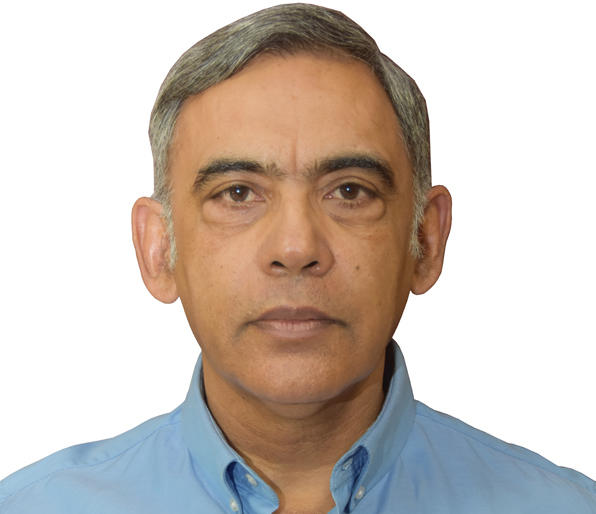 Major General Birender Singh Dhanoa (retired).
Major General Birender Singh Dhanoa (retired).
We put a grim scenario to Gen Dhanoa. We referred to the “lightning incursion” proposal of Brig Dhillon and requested him to suggest a defensive doctrine involving the use of armour, that may help us to neutralize the anticipated People’s Liberation Army counterattack. Gen Dhanoa made it clear that he will not talk about specific operational details in this context and will confine himself to the concepts and doctrines.
This is akin to the run-up to Operation Sichelschnitt, the German blitzkrieg against the western allies in France, Belgium, Holland and Luxembourg, in May 1940. [Footnote 1]
About the role of armour in our defence against a probable PLA counterattack in the event we decide to cross the line of actual control or international border to gain bargaining advantage, Gen Dhanoa says the following:
“(To do that, we need) small bodies of well-equipped and trained forces, including small detachments of tracked platforms*, in mountains to hold off much larger forces, inflict casualties that are more than what an enemy would have catered for and thus impose extra caution or stall an advance.
Mountains, as you know, are excellent terrain for guerrilla- and partisan-type actions, which you have yourself referred to such as the classical Greek action at Thermopylae and much later the use of similar tactics in the mountainous region of northern Greece against the Italians and later the Germans as well in World War II.
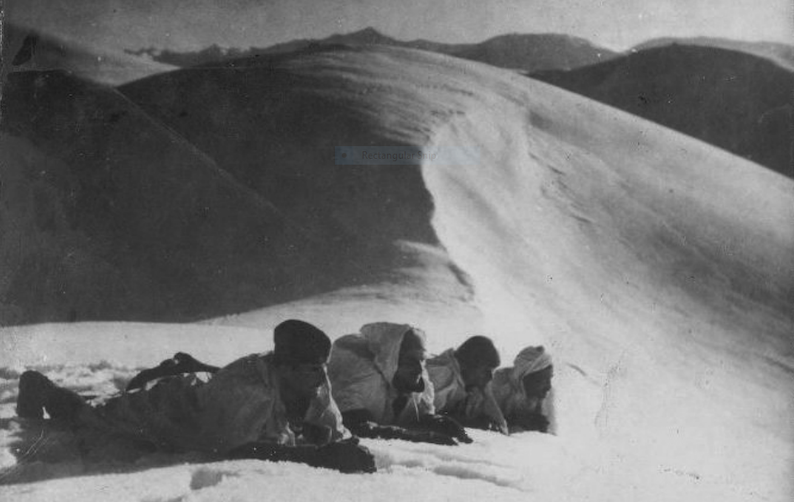 Greek defenders against an enormously superior Italian army during WWII, in the winter of 1940-41.
Greek defenders against an enormously superior Italian army during WWII, in the winter of 1940-41.
Some other references I can give you to look at is the way the Swiss army (despite being neutral in the Cold War) was well organized with underground bunkers, tank pill boxes and obstacles that could be activated at very short notice to block key ingress routes, from the north and east into their mountain redoubts.
Something similar can be attempted (but with proper resources and serious engineering) to block the entrances to narrow valleys in Ladakh, that have the potential to lead to key objectives. Just laying of a reactive minefield or having bunkers covering the approaches won’t do.
Yet another example to look at (though contextually, it may be hard to fit in) is the tactics used by late Ahmad Shah Massoud in the Panjshir Valley against Soviet mechanized columns. Even the counter-Soviet tactics used to deny him the advantage after they understood his tactics, are something that we need to study and learn, for incorporating relevant lessons in our philosophy for fighting the Chinese in a close and hard combat using all advantages that terrain offers.
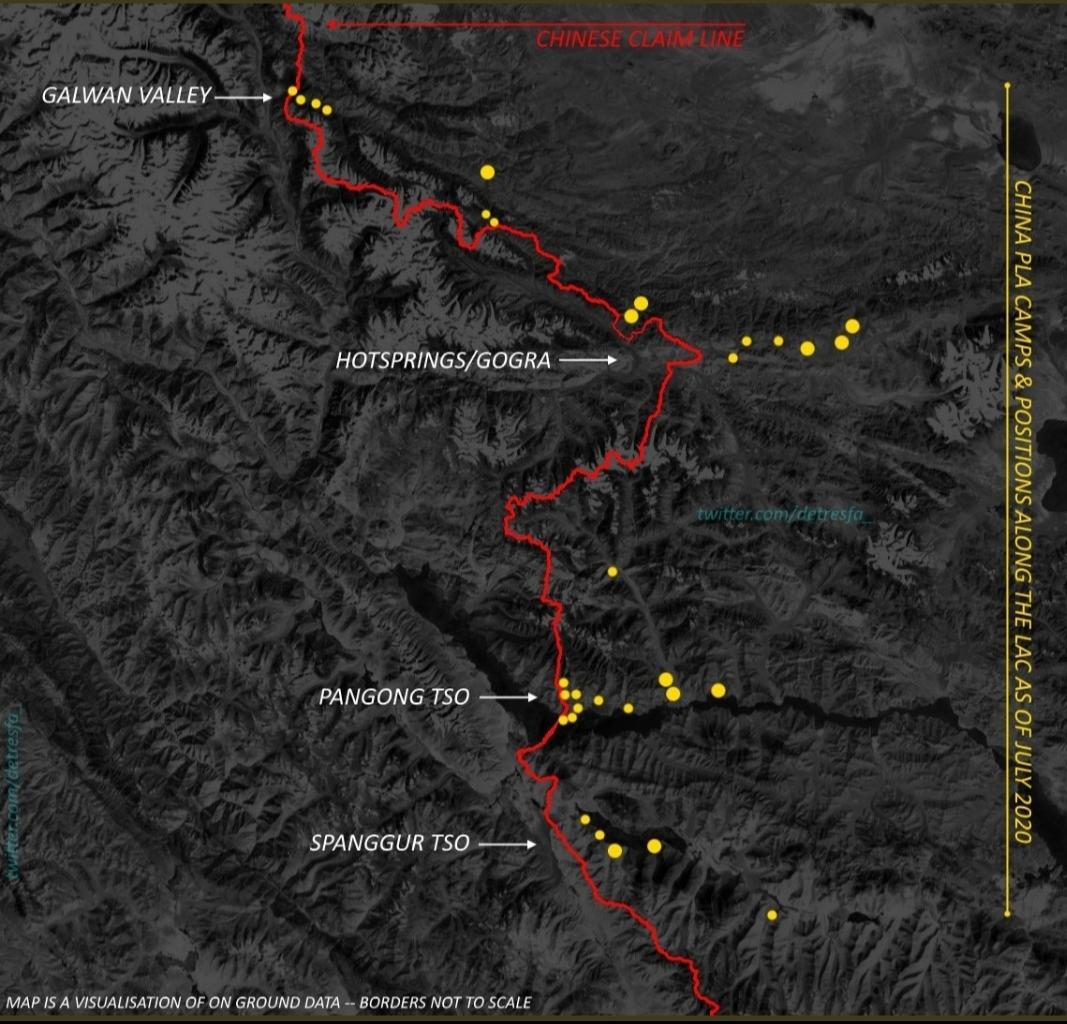 Satellite image of eastern Ladakh that marks Chinese PLA positions , as in July 2020, in yellow dots. (Image courtesy: detresfa_/Twitter)
Satellite image of eastern Ladakh that marks Chinese PLA positions , as in July 2020, in yellow dots. (Image courtesy: detresfa_/Twitter)
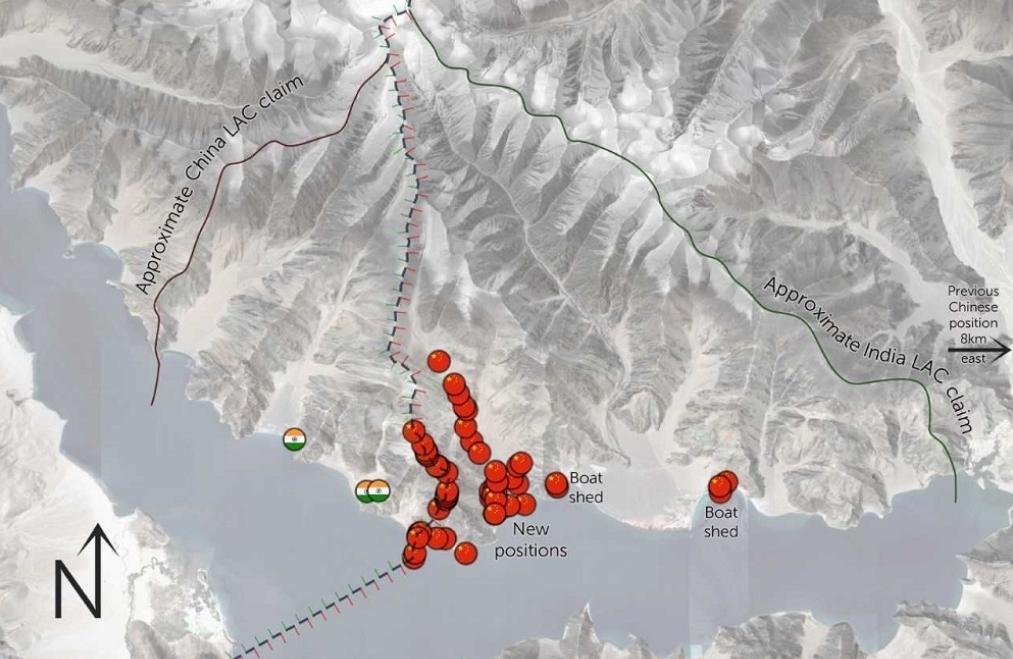 Satellite image marked with Indian and Chinese claims and positions at Pangong-tso, as in July 2020.
Satellite image marked with Indian and Chinese claims and positions at Pangong-tso, as in July 2020.
Last of such examples (and there are so many) could even be the Americans’ hard lessons learned from the Germans at Kasserine Pass in North Africa, in February 1943. We should not remain fixated on just armour battles, but the focus must be on how a combination of terrain (suitably obstacle riddled or channelized by combat engineers), air and artillery along with small detachments of infantry, supported by attack helicopters, can bring an unsuspecting enemy into a killing ground. And then you use your tracked platforms to full effect and give a knockout blow. That is the theory anyway.”
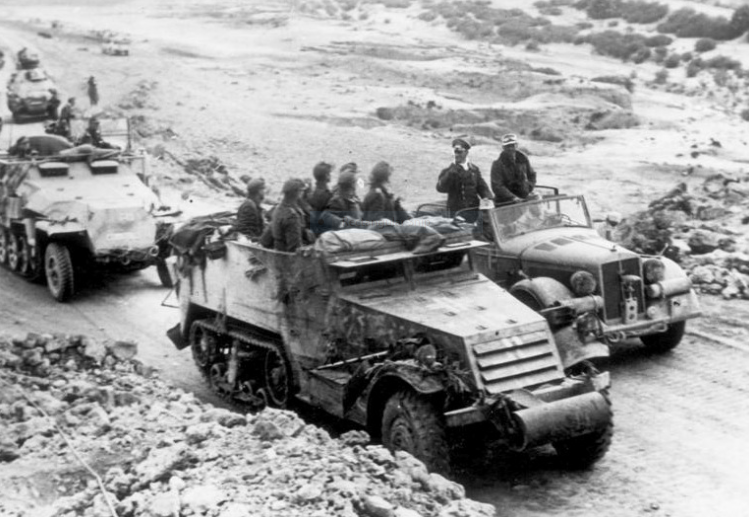 German Field Marshal Johannes Erwin Eugen Rommel speaking with troops riding a captured American-built M3 half-track in Tunisia.
German Field Marshal Johannes Erwin Eugen Rommel speaking with troops riding a captured American-built M3 half-track in Tunisia.
After listening to Gen Dhanoa this far, we would like to quickly interject and point out that armoured doctrine is not really about tanks or even armoured vehicles alone. Successful use of armour, in any terrain is built around an “all-arms doctrine”.[Footnote 2]
Continuing, Gen Dhanoa then talks about the combined use of tanks and mechanized infantry in high altitude:
“Coming to the use of a combination of tanks with mechanised infantry in high altitude, the likely tank runs having been identified, there should be full use of a narrow valley approach that the enemy has to traverse. In such a valley, using the sides, there can be small built-in tunnels, which become hides for armour, and they can even have caches of ammunition in such tunnels. These can be echeloned along the length of a valley (build them where the shadows set in early for better camouflage) and can be used as fall back positions along with pre-registered artillery targets to delay and harass an advancing column.”
Maj Gen Dhanoa then adds:
“Beyond such tactics as described, I cannot think of any other ideas other than create strategic landslides or even avalanches to bury an advancing body of troops, but these have to be well identified, troops earmarked to activate such obstacles and these should not end up trapping your own people.”
Wrapping up his suggestions, Gen Dhanoa says:
“And yes, there has to be a plethora of hand-held SAMs (surface-to-air missiles) and ATGMs (anti-tank guided missiles) with their own mechanized forces to knock out the helicopter and drone threat that the Chinese would use. EW (electronic warfare) and jam-proof communications would also be a given, in addition to well-clad troops and logistically sound replenishment.”
After reading Gen Dhanoa’s suggested doctrine on India’s defences in Ladakh to counter the Chinese forces’ possible counterattack in case India decides to cross the LAC and/or the IB to force the Chinese to a quid pro quo withdrawal from captured territory, many of our readers will feel relieved.
“We will fight with what we have” is a line we have heard often. Now, we have an idea how best to marshal our modest resources and still get the better of a superior force – through a lightning strike as espoused by Brig Dhillon and an equally resourceful and courageous defence to rebuff the enemy’s countermove, as explained by Gen Dhanoa in this article.
Both will involve casualties. Both will beget casualties of men who are not busy reading these pieces but are busy manning those death traps.
“Go, tell the Spartans, stranger passing by, that here, obedient to their laws, we lie.”**
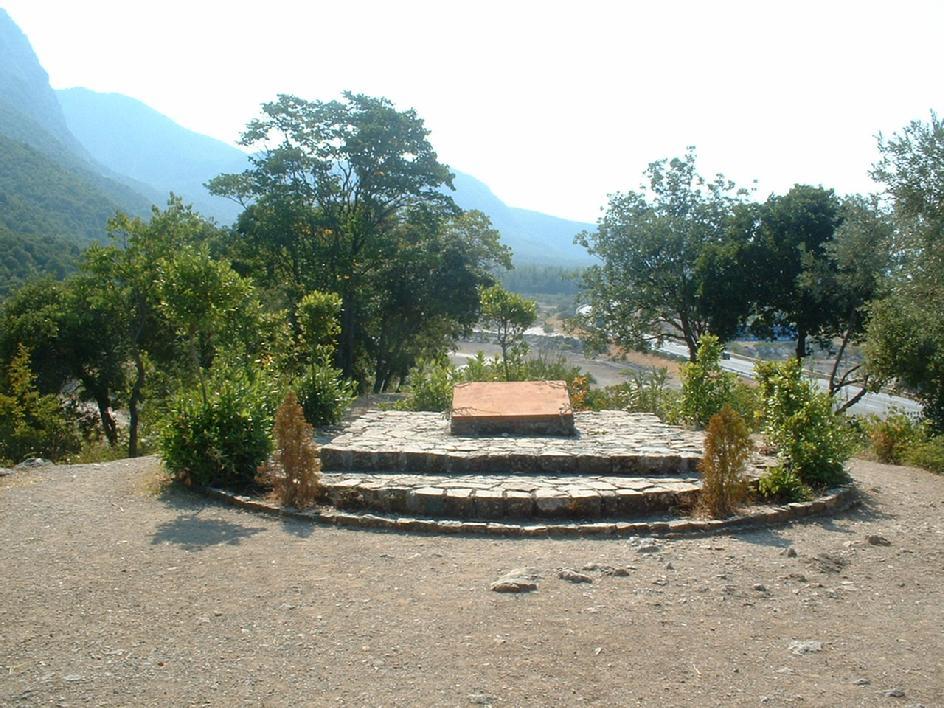 Kolonos hillock, which is the site believed to be the location of the last stand of 300 Spartans. (Photo courtesy: Vasilis Linidis)
Kolonos hillock, which is the site believed to be the location of the last stand of 300 Spartans. (Photo courtesy: Vasilis Linidis)
Footnote 1
Operation Sichelschnitt
General Manstein, the father of Operation Sichelschnitt, had based his operational surprise, on driving the armoured spearhead (schwerpunkt) through the mountainous Ardennes area, at the border of Germany, Luxembourg, Belgium and France.
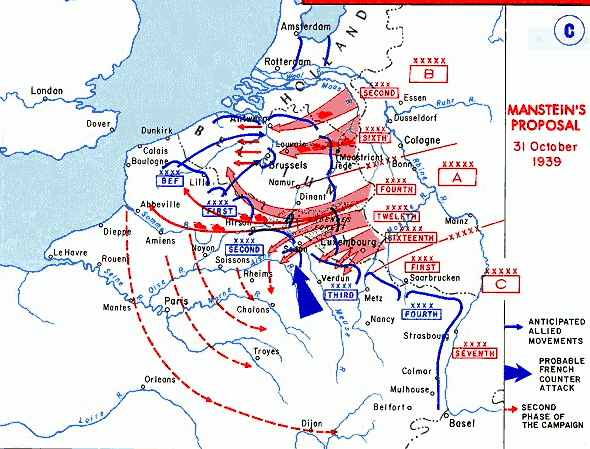 1939-40 Battle of France – plan and evolution.
1939-40 Battle of France – plan and evolution.
The probably thought, “Would the terrain and features, allow a successful armoured strike?” Their enemies, the Allied forces thought no major threat could emerge out of the Ardennes. Hence, they had weak presence opposite that salient. The German general staff didn’t think it was doable. Their plan (Fall Gelb) envisaged an offensive through the old World War I, Belgian route (Schlieffen Plan, though in reverse this time). For Manstein, disturbed by the predictability and lack of imagination, of this plan, it was imperative that a bold and disruptive alternative be found. Sichelschnitt offered that alternative, on condition that its core element, the armoured fist, could be wielded in the right place.
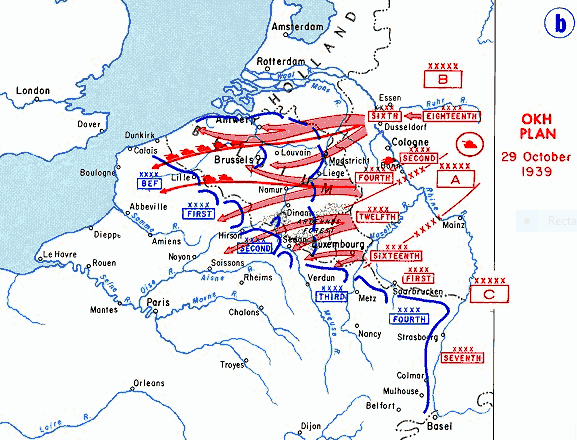 1939-40 Battle of France – plan and evolution.
1939-40 Battle of France – plan and evolution.
“However, was the mountainous Ardennes area traversable by armour?” There was obviously one man to ask – General Heinz Wilhelm Guderian, the father of Germany’s Panzer Doctrine, the wizard of armour and its usage in modern warfare. Manstein asked him and got an answer in the affirmative. “Yes, Panzers could move through the Ardennes.” In the event, Panzer Group Kleist moved through Ardennes with 41,445 vehicles, including 1,225 panzers and 545 half-tracks, over four narrow, winding mountain roads. On the right flank this Panzer group stretched for 155 miles from the Meuse at the front to beyond the Rhine at the hinterland.
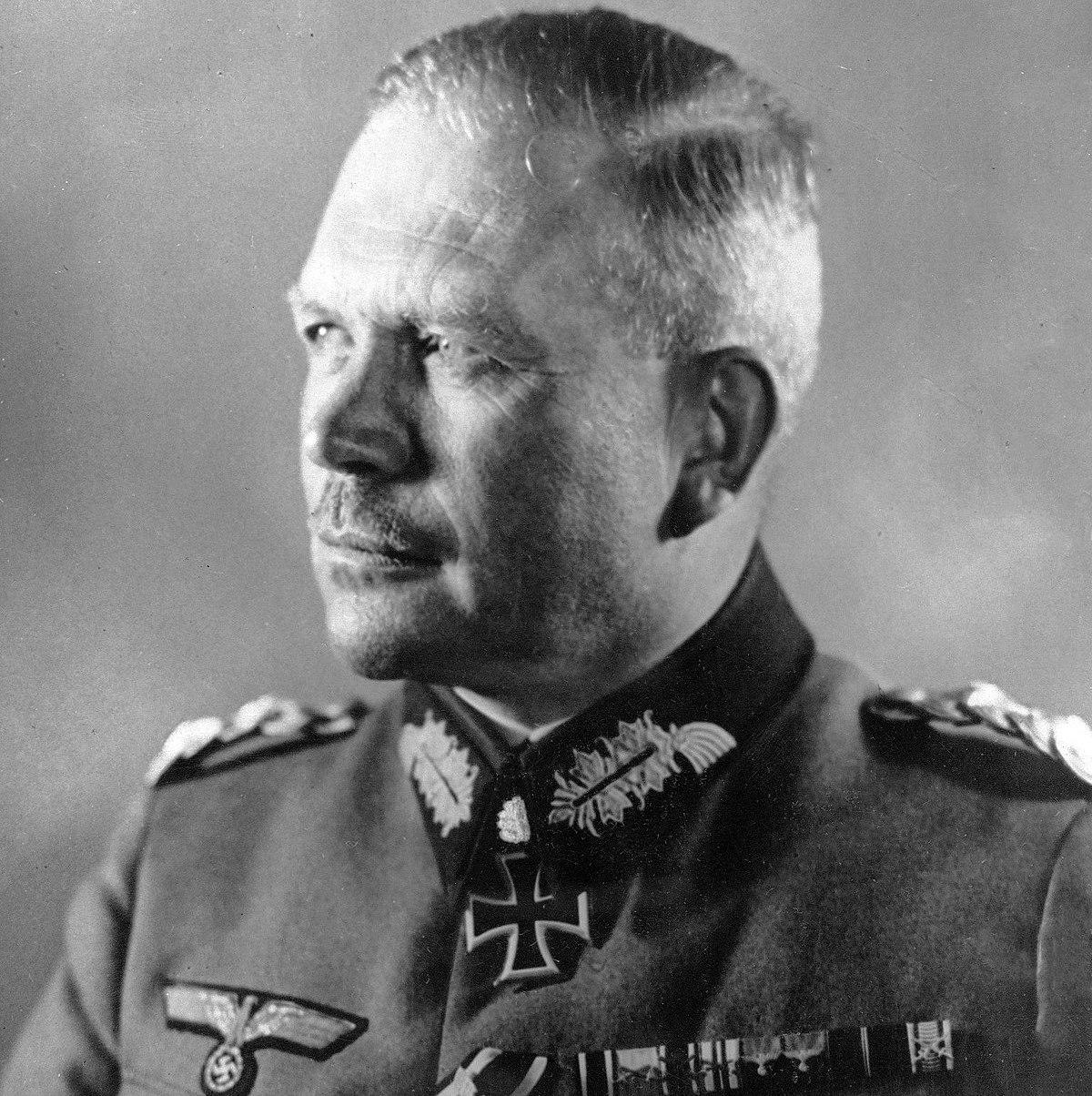 General Heinz Wilhelm Guderian.
General Heinz Wilhelm Guderian.
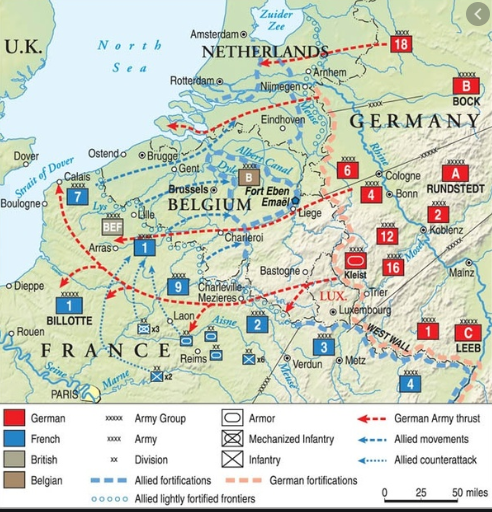 Actual German offensive in the West: May 1940
Actual German offensive in the West: May 1940
Footnote 2
All-arms doctrine
When we envisage the great Panzer drives of WWII, many make the mistake of:
• Equating them with tanks alone.
• Identifying them with offensives and drives into enemy territory.
The Panzer Doctrine was essentially an “all-arms affair”, where tanks formed the nucleus of the formation. But a Panzer Division had organic components of mechanised infantry, towed and self-propelled artillery, mobile air defence platforms, engineers, powerful “Aufklarungs” (reconnaissance) units equipped with motorcycle combinations, Kübelwagens, and light armoured cars. To offer the troops better all-terrain movement capability the Aufklärungsabteilungen (reconnaissance battalions) were later issued with the amphibious Schwimmwagens and light half-tracks. To top it all, they had 9 reconnaissance aircraft embedded in the division. Talk of an IBG (integrated battle group)!
In the same vein, we would like to point out that the “all-arms” Panzer Doctrine works in defence as well as, in offence. The same concepts of concentrated fire power being used at the enemy’s weaker points, can be used in interdiction of the PLA’s lines of logistics and rear echelon support columns. The question may be raised that mobility of our forces, essential to the Panzer Doctrine, won’t be applicable in Ladakh. Here again there are successful examples that be drawn upon from the leading exponents of Panzer warfare.
Rommel had perfected the use of individual medium and heavy tanks in defence, in the Bocage (hedge growths, meadows and woodlands) country in Normandy, France. If there is terrain friction reducing the mobility of our forces, the same would apply to the enemy too. Rommel brought to a standstill, superior tank heavy, allied forces with his dwindling panzer forces, using terrain and a string of strong points. These “open fortresses” consisted of individual tanks under camouflage, around which infantry manned field positions with the entire array of infantry weapons-light and heavy, AT, dual purpose AA guns and medium artillery back-up. His forces were able to hold the allies for two and a half months, with heavy casualties.
* Tracked Platforms: Usually armoured fighting vehicles mounted on caterpillar tracks rather than wheels. Some vehicles are “half-tracks” i.e., they have both tracks and wheels for versatile deployment.
** Simonides epitaph on the Cenotaph of Thermopylae, recorded by Herodotus.
[Disclaimer: Views expressed by Major General Birender Singh Dhanoa are his own and don’t necessarily reflect the views of India Sentinels.]


